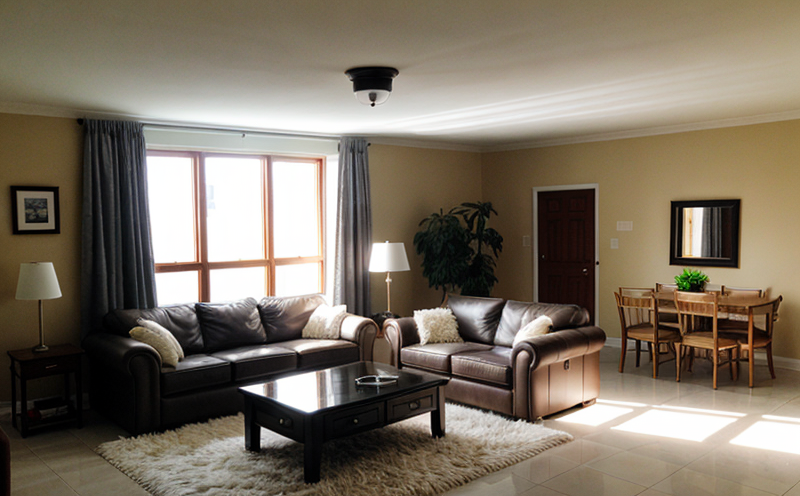CIE 224 Indoor Lighting Colour Fidelity Testing
Colour fidelity testing is a critical aspect of ensuring that indoor lighting products meet the expectations and performance standards set by consumers, industries, and regulatory bodies. The CIE (Commission Internationale de l'Éclairage) standard CIE 224, which focuses specifically on colour fidelity in indoor lighting, provides a robust framework for evaluating how accurately various light sources reproduce colours of objects under their illumination.
The importance of colour fidelity cannot be overstated. Inaccurate or inconsistent colour reproduction can lead to user dissatisfaction and even safety concerns, especially in industries like healthcare, retail, and hospitality. For instance, in the medical sector, inaccurate lighting could result in misdiagnosis due to incorrect visual assessment of skin tones or blood flow.
Understanding the principles behind CIE 224 is essential for anyone involved in the design, production, or quality assurance of indoor lighting products. This standard addresses the limitations of traditional colour rendering indices (CRI) and introduces a more comprehensive approach to assessing how well light sources render colours across a wide range of objects.
The testing process involves illuminating various reference samples with the light source in question and comparing the resulting colours against known standards using advanced spectrophotometric instruments. The equipment used for this test typically includes high-precision spectrophotometers capable of measuring tristimulus values, which are then processed to calculate a colour rendering index (CRI).
The CIE 224 standard goes beyond the traditional CRI by introducing several new metrics and methods that provide deeper insights into the colour fidelity of light sources. These include the colour quality scale (CQS) and the improved correlated colour temperature (I CCT). The CQS provides a more accurate measure of how well a light source renders colours across a broader range of objects, while I CCT offers improved accuracy in predicting how a light source will appear to different observers.
In practical terms, this means that manufacturers can use CIE 224 testing to ensure their products meet specific colour fidelity requirements. For example, in the retail sector, accurate lighting is crucial for displaying merchandise attractively and accurately. Inaccurate lighting could lead to customers making purchasing decisions based on incorrect perceptions of product colours.
Quality managers, compliance officers, R&D engineers, and procurement teams all play critical roles in ensuring that indoor lighting products meet these stringent standards. By incorporating CIE 224 testing into their quality assurance processes, they can ensure consistent colour reproduction across different environments and lighting conditions.
Why It Matters
The accuracy of colour fidelity is not just a technical detail; it has profound implications for various industries. In retail, accurate lighting ensures that products are displayed in their true colours, enhancing the shopping experience and increasing sales. For healthcare professionals, accurate lighting can mean the difference between correct diagnosis and misdiagnosis. The hospitality industry relies on consistent colour reproduction to create an inviting atmosphere, while the automotive sector demands accurate lighting for interior design and safety.
Accurate colour fidelity is particularly important in sectors where precision is paramount. In manufacturing, for instance, even slight deviations in light source performance can lead to quality control issues, affecting both production efficiency and product consistency. The textile industry also benefits from precise colour reproduction, as accurate lighting ensures that fabrics are produced consistently.
The significance of CIE 224 testing extends beyond individual industries; it contributes to the overall sustainability and energy efficiency initiatives by promoting the use of light sources with superior colour fidelity. This not only enhances user experience but also reduces waste and improves resource utilization, aligning with broader environmental goals.
Applied Standards
The CIE 224 standard is built on a foundation of extensive research and collaboration among lighting experts from around the world. It draws heavily from existing standards such as ISO 17651-3, which provides guidelines for measuring light sources, and ASTM E2034, which focuses on colour quality metrics.
The standard itself is structured to ensure that lighting products meet the highest levels of colour fidelity. It introduces new metrics such as the Colour Quality Scale (CQS), which evaluates how well a light source renders a wide range of colours, and Improved Correlated Colour Temperature (I CCT), which offers better prediction of how a light source will be perceived by different observers.
Implementing CIE 224 testing requires precise instrumentation and rigorous procedures. The testing process typically involves illuminating reference samples under the lighting conditions being evaluated and measuring the resulting colours using high-precision spectrophotometers. These instruments can measure tristimulus values, which are then used to calculate colour rendering indices.
The standard also emphasizes the importance of consistency in testing environments. This ensures that the results obtained are reliable and reproducible across different lighting conditions and locations. This is particularly important for industries that rely on consistent product performance across various geographic regions.
International Acceptance and Recognition
CIE 224 has gained widespread acceptance in the global lighting industry, with many manufacturers and regulatory bodies adopting it as a standard for evaluating indoor lighting products. The United States Department of Energy (DOE) has recognized CIE 224 as part of its energy efficiency programs.
European Union directives on lighting quality also incorporate principles from CIE 224, reflecting the growing global consensus on the importance of colour fidelity in indoor environments. The International Electrotechnical Commission (IEC) has referenced CIE 224 in its standards for lighting products.
The international recognition of CIE 224 underscores its significance in ensuring that lighting products meet global quality and safety standards. This universal acceptance ensures that consumers, industries, and regulatory bodies can rely on consistent, high-quality indoor lighting solutions worldwide.





